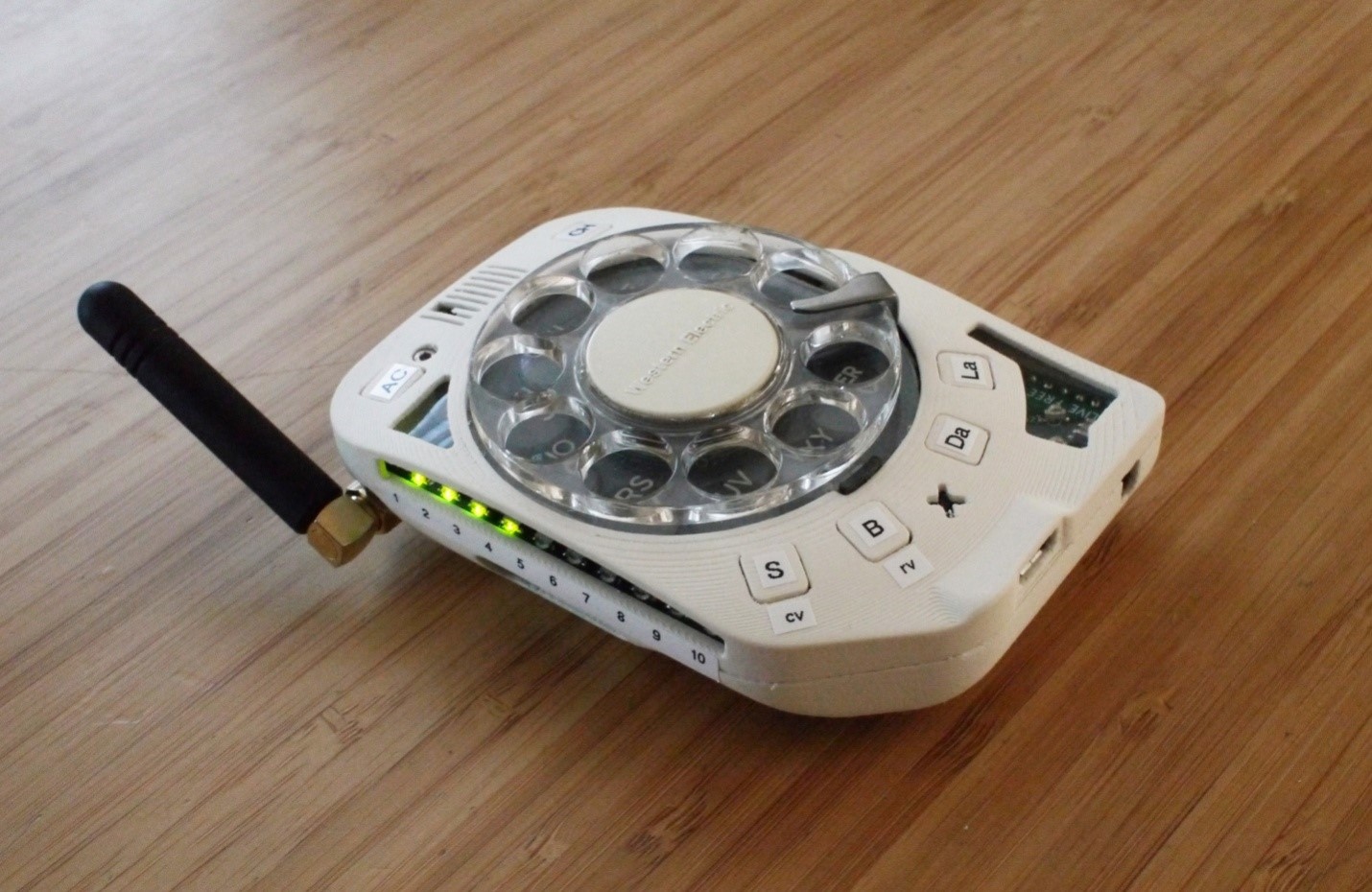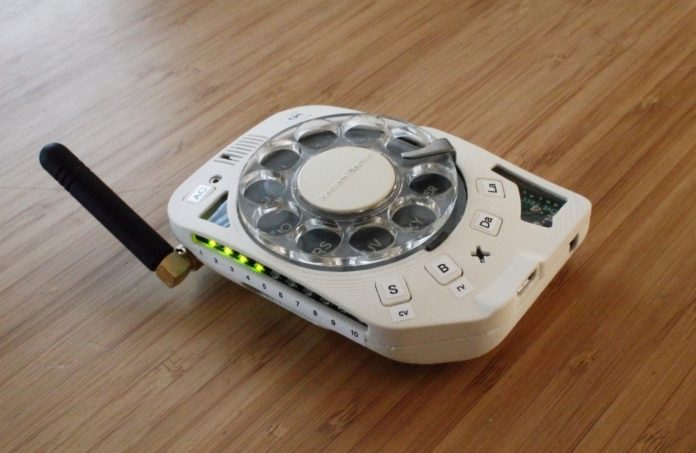Well here is something I thought I’d never see … looking like the kind of contraption that a 1950s engineer might have come up with if asked to create a “futuristic phone that you can carry around,” this seemingly early attempt at a cell phone is, in fact, a recently designed device that actually works. And you can buy it, too.
The rotary cell phone is the work of Justine Haupt, an engineer at Brookhaven National Laboratory in New York, and whilst it was done initially for a bit of ‘fun’, there has been so much interest in it that she has now made it available in kit form for $240.

Haupt’s rotary cell phone features … well, not very much, but for some that will be its appeal.
Some of the physical buttons on the device, for example, can be set up to link to frequently called numbers, eliminating the need for a touchscreen and menu. Just to be clear, the dialer does work, and can be used for other numbers that you don’t save.
Incorporating some slightly more modern technology, on the back you’ll find a curved e-paper display — a late addition to the design but now Haupt’s favorite feature — that shows missed calls and other relevant messages.
The 10 green lights down the side of the phone indicate the battery level, and the device can be powered on and off using a slide switch. “No holding down a stupid button to make it turn off and not being sure it really is turning off,” Haupt said in her online notes.
While there are a few parts that you have to supply yourself, including the all-important rotary dial, the mainboard, as well as the 3D-printed casing with threaded inserts and buttons, is all part of the package
With tech firms like Samsung and Motorola continuing to push the boundaries of mobile technology with the recent launch of folding smartphones, Haupt’s design is a nod to a bygone era where you had to stick your finger in a hole, turn the dial, and release (for each number) in order to make a phone call.
Haupt said that part of the reason she wanted to take on the challenge of building a rotary cell phone was because “in a finicky, annoying, touch screen world of hyper connected people using phones they have no control over or understanding of, I wanted something that would be entirely mine, personal, and absolutely tactile, while also giving me an excuse for not texting.”
She said she also wanted to demonstrate that “it’s possible to have a perfectly usable phone that goes as far from having a touchscreen as I can imagine.”
It should certainly be a conversation starter! If interested visit https://justine-haupt.com/rotarycellphone/index.html










